Title : Successful Larviculture of the giant Africa freshwater prawn Macrobrachium vollenhovenii in Cameroon
Abstract:
The African River prawn Macrobrachium vollenhovenii is the largest of the local Palaemonidae prawns along the Cameroonian coast and an important target species for fisheries and aquaculture. A preliminary study on larviculture of this species was carried out at the IRAD-AQUASOL hatchery in Kribi, Cameroon. Berried females M. vollenhovenii were obtained from the Lobe and Lokoundje Rivers in the Southern Region, typical Lower Guinea rainforest streams. The larval rearing system consisted of a single recirculation system of four 65 L cylindrical plastic containers connected to a submerged biological filter container (65 L). Experiments were conducted three times in the same condition, with two batches of larvae reared separately in duplicate per experiment, at a density of 40/L, temperature 26?C, and salinity 16%0. Larvae were fed from 1 day after hatching until metamorphosis to postlarvae (PL) with newly hatched Artemia nauplii, three times daily at the rate of 5 nauplii per mL water. The number of newly hatched larvae per female body weight unit was not affected by the female size and ranged between 531 to 1349 larvae g−1. The six batches succeeded from hatching to metamorphosis, and the 11 distinct larval stages described for M. rosenbergii were found. Larvae in all the batches developed more or less at the same pace up to stage V. However, a clear difference in the timing of appearance of the developmental stages was observed between batches and individuals of the same batch during the subsequent stages. The transition from stage V to stage VI and from stage IX to stage X was longer than the passage to other stages and seems to be the critical rearing period of M. vollenhovenii. From day 20 onward to sampling, the larval stage index (LSI) showed that larval development of the batch 1 was significantly faster than for all other batches. The time for first appearance of postlarvae was variable between batches (41–74 days), and batch 1 larvae passed through metamorphosis within a shorter span of time (41 days). Survival up to postlarvae was variable among batches, ranging between 3%–9%, and was better in batch 1 (9.31 ± 1.09). The general poor performance in terms of survival and metamorphosis rates of larvae seems to be related to the wild condition of broodstock. To improve performance of larvae, domestication of stock may be necessary. This result is the first recorded success in larviculture of M. vollenhovenii in Cameroon.



